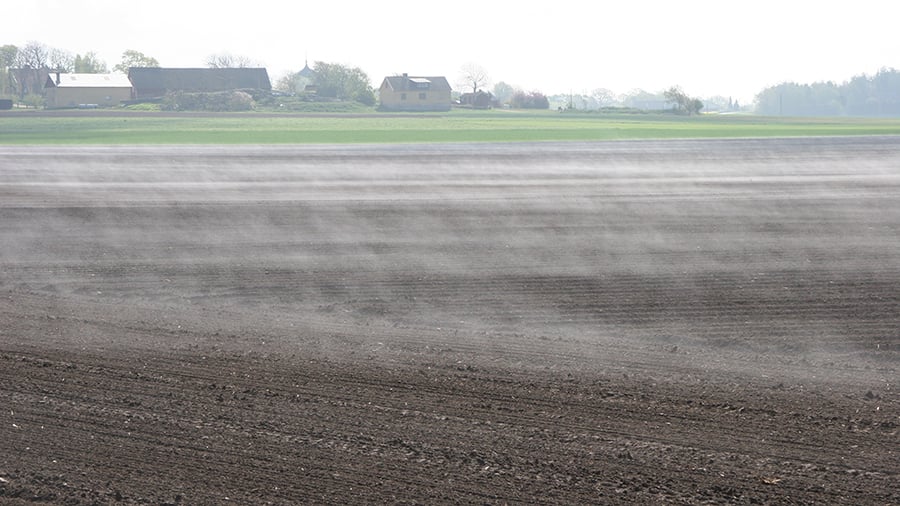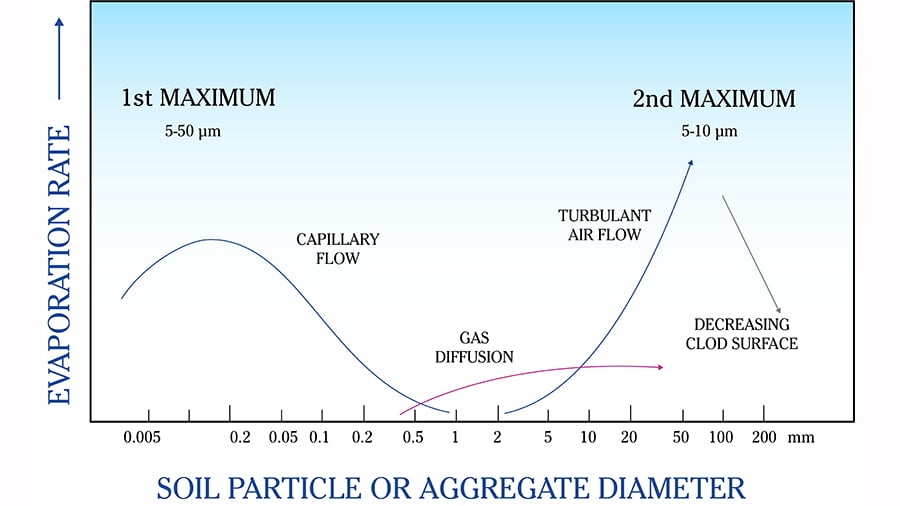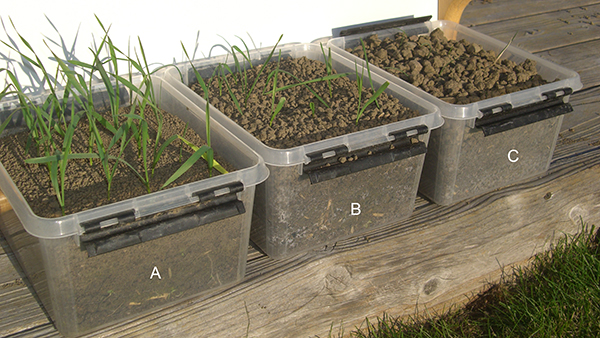If rain does not fall after sowing, the water present in and under the seedbed is critical for how well the new crop can establish. It is important to retain this water and manage it carefully if the seed is to germinate.
Sun heats up the soil
When the sun rises and begins to shine on a newly sown field, the energy from the sun’s rays heats up the water in and under the seedbed. Some of the water molecules acquire enough energy to convert to gaseous form and attempt to move out of the seedbed and into the air as water vapour.







